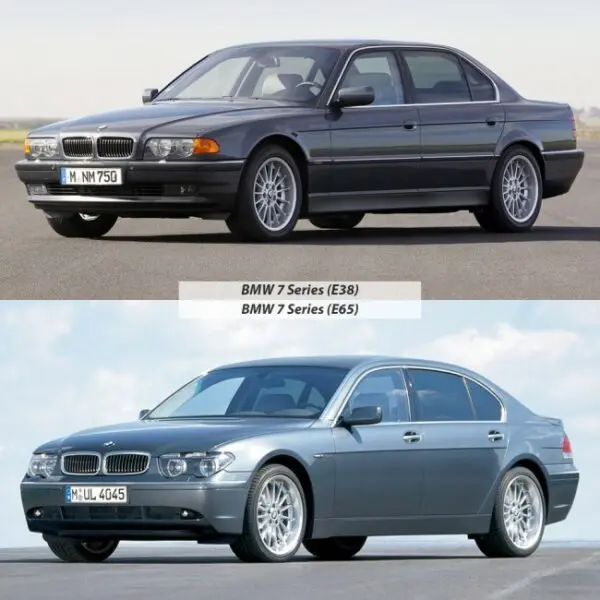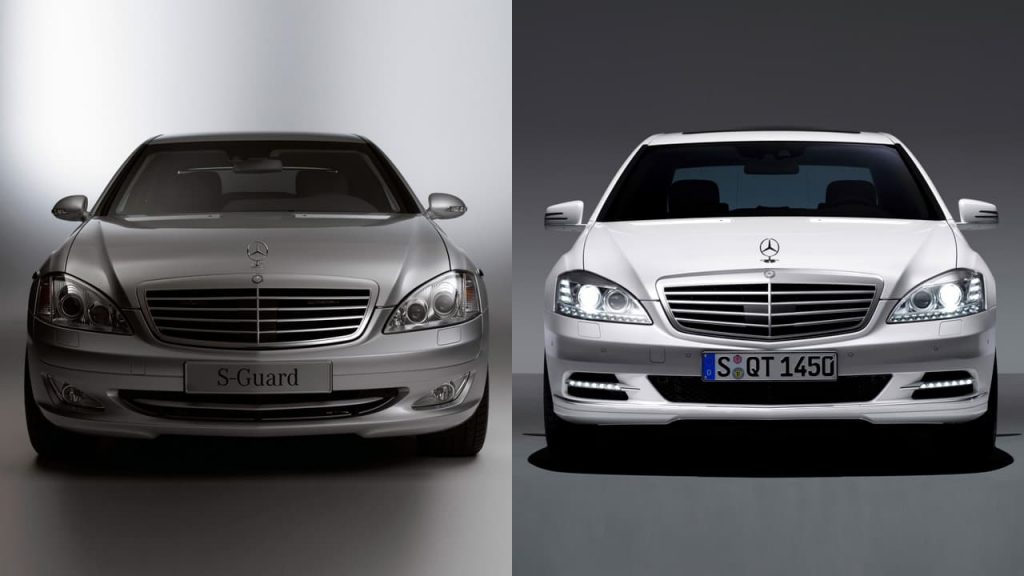Когда водитель-новичок выбирает первый автомобиль, в объявлениях он часто может встретить слово «рестайлинг». Разбираемся, что это значит, чем отличаются такие машины и как рестайлинг влияет на цену авто.
Что такое «рестайлинг»
Слово «рейстайлинг» пришло из английского языка. В переводе оно означает изменение стиля. Но по сути рестайлинг у автомобиля — это обновление конкретной модели автомобиля в рамках одного поколения.
Разберемся на примере. Есть производитель автомобилей, например, Тойота, который выпускает разные модели автомобилей. Одна из популярных моделей — Королла. У нее 12 поколений, то есть автомобиль претерпевал значительные изменения 12 раз. Почти у каждого поколения есть рестайлинг, в ходе которого модель получала внешние и небольшие конструктивные изменения, к примеру, новые фары, решетку радиатора или небольшие изменения в салоне.
Так, популярная Toyota Corolla 11 поколения после рестайлинга 2017 года получила новые фары и задние фонари, три новых цвета кузова и более разнообразный набор комплектаций. Был обновлен интерьер и улучшена шумоизоляция.
Чем рестайлинг отличается от другого поколения
Обычно производители обновляют модельный ряд раз в несколько лет. За это время автомобиль успевает устареть и выглядеть менее привлекательно по сравнению с конкурентами. Поэтому компания делает рестайлинг, чтобы обновить автомобиль, не дожидаясь выхода следующей модели.
Рестайлинг отличается от другого поколения тем, что изменения не такие значительные. Новая модель обычно получает значительное обновление кузова и конструктивных элементов: двигателя или коробки передач. При рестайлинге изменения больше затрагивают дизайн внешнего вида авто и интерьера, поэтому вместо слова «рестайлинг» иногда используется термин «фейслифт». Иногда в рестайлинге исправляют какие-то конструктивные ошибки, так называемые «детские болезни».
Обычно производители делают один рестайлинг модели — через три-четыре года после ее выхода на рынок. Если перерыв между поколениями большой или накопилось много изменений, могут сделать и два.
Как рестайлинг меняет цену на авто
Главная цель рестайлинга — сделать машину более современной. Автопроизводитель, помимо этого, старается улучшить и технические характеристики, однако так делают не все. А значит перед покупкой стоит узнать, что конкретно исправляли и улучшали при рестайлинге определенной модели.
Для покупателя рестайлинг автомобиля означает, что машина, скорее всего, будет более надежной и выглядеть более современно. Цена в связи с этим на рестайлинговый автомобиль будет выше, чем цена на эту же модель более старых годов.
Удачные и неудачные рестайлинги
Один из примеров удачного рестайлинга — Фольксваген В5+. Автомобиль и до рестайлинга обладал хорошей аэродинамикой и просторным салоном, а после приобрел еще более привлекательный внешний вид и обновленные элементы подвески.
Другой пример — самый известный в российском автопроме — рестайлинг Лады Гранта. В 2011 году этот автомобиль не отличался современным дизайном. А после рестайлинга 2018 года машина кардинально преобразилась: кузов стал более обтекаемым, появилась X-образная стилистика. Был обновлен салон, появились комплектации с более производительным мотором.
Одним из самых неудачных рестайлингов считают рестайлинг Хендай Элантра 2019 года. Машина получила полностью обновленный кузов, фары, решетку радиатора, крылья и багажник. Эксперты и многие автолюбители оценили новый дизайн как «злой» и самый неудачный в истории модели.
Кратко
- Рестайлинг — это обновление автомобиля между выпусками новых моделей
- Обычно обновляют внешний вид и салон, а также решают «детские проблемы»
- Рестайлинг делают 1-2 раза
- Рестайлинговые автомобили более свежие и стоят дороже.
Автор: Наталья Куляшова
Видели фразы «автомобиль после рестайлинга» и «рестайлинговая модель»? Рассказываем простыми словами о том, что скрывается под такими терминами.
Что такое рестайлинг и каким он бывает?
Разработка новой модели автомобиля отнимает от 2 до 7 лет. Конечно, производитель хочет как можно дольше пользоваться полученными результатами. Но со временем спрос начинает снижаться. И тогда на помощь приходит рестайлинг — обновление машины в рамках нынешнего поколения без проектирования «с нуля».
Различают три типа рестайлинга:
- технический — затрагивающий основные агрегаты автомобиля;
- редизайн — серьёзное обновление снаружи и внутри, при котором техника остаётся прежней;
- фейслифтинг — лёгкие «косметические» изменения.
В среднем, жизненный цикл одной модели автомобиля охватывает 6–8 лет. Обычно за это время она переживает один рестайлинг. Но есть исключения. К примеру, у Toyota Land Cruiser 200 одно обновление приходилось на 6,5 лет, а у Mazda 6 — на 2,5 года. Внеплановый рестайлинг проводится, если продажи машины не соответствуют ожиданиям производителя.
Граница между рестайлингом и новой моделью
Разница порой бывает тонкой и даже неуловимой. Иногда производители называют рестайлинговый автомобиль новым поколением, а иногда представляют комплексное изменение конструкции, как лёгкое обновление. Разобраться в таких нюансах нелегко. Обычно при рестайлинге большая часть силовой структуры кузова остаётся прежней — инженеры работают с существующими «клетками» салона, лонжеронами и программируемыми зонами деформации.
Чаще всего рестайлинг подразумевает обновление дизайна передней части машины. Иногда специалисты работают с оформлением кормы и бортов. Глубокие изменения встречаются редко — они всегда влияют на комфорт и ходовые качества автомобиля. К ним относят:
- рестайлинг салона. Пример — Volvo S80 второго поколения, который получил более утончённый интерьер с улучшенными материалами отделки;
- обновление трансмиссии. Например, Hyundai Solaris первого поколения при рестайлинге получил 6-ступенчатую автоматическую коробку передач взамен 4-ступенчатой;
- изменение характеристик ходовой части. Подвеска рестайлинговой Mazda 6 стала более жёсткой. Одновременно улучшилась шумоизоляция, что помогло сохранить прежний уровень комфорта;
- установка новых силовых агрегатов. Модель BMW 5-series E60 пережила комплексное обновление — атмосферные двигатели уступили место турбомоторам.
Есть и считанные случаи, когда рестайлинговый автомобиль фактически становится другой моделью. Например, Range Rover второго поколения при обновлении получил двигатели и коробки передач Jaguar вместо техники BMW, иную внутреннюю электронику, перенастроенную подвеску и современную мультимедийную систему с сенсорным экраном.
Рестайлинг: плюсы и минусы
Для производителя рестайлинг обходится дешевле, чем разработка новой модели. Поэтому и потребители получают автомобиль с лучшими техническими характеристиками и современным дизайном без серьёзных доплат.
У самого процесса рестайлинга нет минусов. Недостатками можно назвать только рост цен и вероятность неудачного обновления. Но такие же риски есть и у выпуска новой модели — они связаны с обычной деятельностью производителя, а не с обновлением автомобилей.
26.03.2022
Рестайлинг — средство поддержания автомобиля в форме
Люди, чтобы выглядеть моложе, используют косметику и пластическую хирургию. С автомобилями в зрелом возрасте происходит то же самое, только операция по омоложению называется рестайлингом
Посмотрим, когда приходит время рестайлинга и от чего зависит его глубина.
- Что это
- Отличие от нового поколения
- Зачем нужен
- Примеры
Что такое рестайлинг?
Рестайлинг — это плановое или вынужденное обновление модели автомобиля в рамках ее жизненного цикла, средняя продолжительность которого семь лет. В зависимости от ситуации в этот период может проводиться одно или несколько обновлений.
В чем отличие рестайлинга от нового поколения модели
В ходе рестайлинга не меняются самые дорогостоящие элементы конструкции автомобиля: платформа, силовая структура и базовые компоненты кузова, такие как крыша с ее стойками, двери. Столь значимые замены (да и то не всегда в полном объеме) происходят при передаче эстафеты от одного поколения модели к следующему. Различают:
- Собственно рестайлинг (или фейслифтинг, или minor change). При этом обновляется обвес кузова (бамперы, оптика, реже — крылья, капот), а также цветовая гамма, дизайн колесных дисков, некоторые элементы интерьера, в том числе материалы отделки.
- Масштабный апгрейд. Проводится, если примерно к середине жизненного цикла модели марка запускает совместимые с уже выпускающимися образцами новую линейку силовых агрегатов, более совершенные комплексы безопасности и мультимедиа.
Фото: Shutterstock
Зачем нужен рестайлинг
Рестайлинг, не говоря уже о масштабном апгрейде, — способ подогреть интерес к модели, которая должна оставаться на конвейере еще несколько лет. Одновременно это средство, позволяющее выдерживать конкуренцию со стороны более молодых и порой технологически более продвинутых одноклассников других марок.
Иногда глубокий рестайлинг проводится вынужденно — в ответ на негативную реакцию покупателей на изначально предложенный вариант дизайна модели. Яркий пример такой ситуации — рестайлинг FIAT Multipla в 2004 году: экзотическая внешность выпущенного шестью годами ранее компактвэна вызвала отторжение значительной части аудитории.
Рестайлинг автомобиля: примеры
В качестве примеров рестайлинга возьмем три популярные в России модели.
KIA Rio
Бестселлер марки в России и один из столпов нашего рынка, не говоря уже о сегменте моделей малого класса, Rio четвертого поколения дебютировал в 2017 году, а в 2020-м пережил рестайлинг. Рестайлинговую версию отличают слегка увеличившие длину модели новые бамперы, более крупная радиаторная решетка, фары прихотливой формы, измененные кормовые фонари, трапециевидные выхлопные фальш-патрубки и имитация диффузора. Интерьер освежил молдинг на передней панели. Более дорогие версии получили увеличенные дисплеи медиасистемы и борткомпьютера. Контрастные вставки на кузове и в салоне достались новой, «молодежной» комплектации Style. Частью мультимедийного комплекса модели в топ-комплектации стала навигационная система.
Lada Largus
Принявшая коммерческий старт в 2012 году русифицированная версия Dacia Logan MCV первого поколения в 2021 году пережила масштабный апгрейд, затронувший как дизайн, так и механическую начинку модели. После апгрейда 2021 года универсал получил переднюю часть кузова, оформленную в фирменном «икс-стиле», галогенные фары от Renault Logan второго поколения и наружные зеркала заднего вида с интегрированными указателями поворота.
В интерьере прописались передняя панель от рестайлингового Renault Duster первого поколения и новый приборный щиток с дисплеем борткомпьютера, а также руль от Lada Vesta (в старших комплектациях — мультифункциональный). Гамму двигателей Largus в ходе апгрейда пополнил новый 8-клапанный 1,6-литровый атмосферник мощностью 90 л.с.
Skoda Kodiaq
Первый среднеразмерный кроссовер Skoda вышел на рынок в 2017 году, а с осени 2021 года в России появилась омолодившаяся модель. Обновления 2021 года выразились в появлении приподнятого капота с более крупной и вертикальной радиаторной решеткой, тогда как полностью светодиодная оптика стала частью стандартного оснащения. Салон освежили декоративные вставки и контрастная строчка на передней панели и дверях, а также фоновая LED-подсветка с расширенным функционалом. После апгрейда из числа напарников 150-сильного 1,4-литрового TSI исключили МКП6, оставив лишь 6-ступенчатый «робот» с двумя сцеплениями. Для версий с приводом 4х4 стали доступны амортизаторы с регулируемой жесткостью.
Content
- What is car restyling
- Why do you need restyling
- Reasons for restyling
- Why don’t car companies release another new generation 3 years after the release of a new model?
- Types of car restyling
- Stylistic restyling
- Technical restyling
- Why car brands carry out restyling of cars
- What changes in the car after restyling?
- What, as a rule, does not change with a restyling?
- What does restyled car mean?
- Does the mechanical part of a restyled car change?
- Benefits of restyling for the manufacturer and the buyer
- Examples of restyling new cars
- Features of restyling cars
- What changes in the car after restyling?
- What, as a rule, does not change with a restyling?
- Does the mechanical part of a restyled car change?
- Examples of restyling new cars
- Related videos
- Questions and answers:
There are tens of thousands of models on the world car market, each of which has its own distinctive look and technical characteristics, but to attract more buyers, many manufacturers have resorted to a marketing ploy called restyling.
Let’s figure out what it is, why is it used for a new car, and what changes in the car after the procedure?
Using restyling, the manufacturer makes minor adjustments to the car’s appearance to refresh the current generation model.
Restyling means changing some elements of the car body so that the vehicle looks different without fundamental changes. A similar term that is applied to this procedure is facelift.
It is not uncommon for automakers to resort to major changes to the interior to update the current model. There are also times when, as a result of a facelift, the car receives deep body updates. For example, the car becomes more understated than the base model or gets a new part (spoiler or sports body kits). With all these changes, the model name does not change, but if you put these cars next to each other, then the differences are immediately striking.
Why do you need restyling
In the automotive market, a lull is always identical to the collapse of a company. For this reason, manufacturers closely monitor the relevance of the technical filling of their products, as well as the popularity of the model range. Usually, in 5-7 years after the next generation is published, it will become commonplace and lose interest of buyers.
So why have we been hearing more and more about the release of an updated version of a famous machine lately?
Reasons for restyling
As strange as it sounds, the auto world also has its own fashion and style. And these trends are closely followed by designers and engineers of all self-respecting companies. An example of this is the birth of the VAZ 21099 modification.
In those distant times, the famous «eight» and its restyled version — «nine» met the needs of the younger generation, who wanted to have an inexpensive car, but with sports characteristics (at that time). However, in order to satisfy also the requests of sedan lovers, it was decided to develop a new, also restyled version, a model based on the 09th, but in a sedan body. Thanks to this decision, the car became an icon of style and significance among the generation of the 90s.
Another reason for such model updates on the market is competition. Moreover, it greatly speeds up the process of appearance of restyled models. Some brands try to keep up with the needs of customers, while others set the tone in this, constantly raising the bar to the next level.
Often, it takes no more than three years to develop and release a new generation of a model or a facelift version. Even the most popular car can maintain its position precisely because of this marketing ploy.
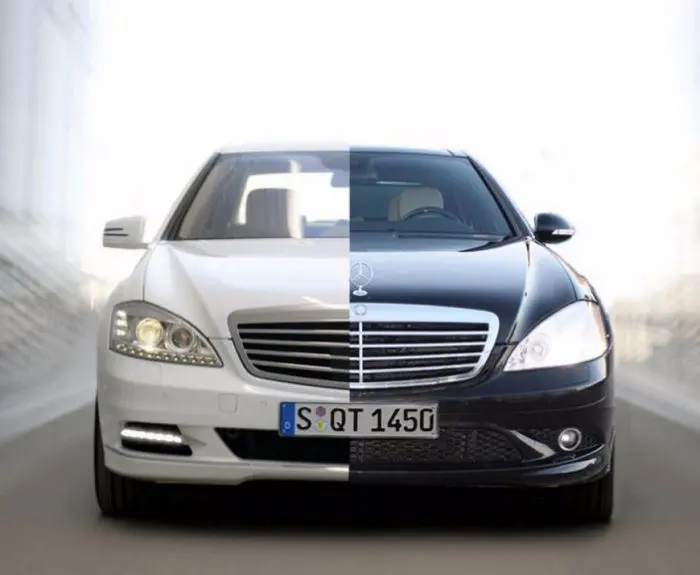
In this regard, a completely logical question arises: why waste time and resources on restyling, and then, after a couple of years, release a new generation? It would be much more logical to immediately release a new generation of cars.
The answer here lies not so much in logic, but rather in the material side of the question. The fact is that when a model is under development, a lot of licenses and technical documentation must be collected for a new machine. Engineering developments, licenses for new powertrains and electronic systems all require investment.
When the next model is released, sales of the previous modification must cover not only the costs of obtaining the appropriate approvals, but also the salaries of the company’s employees. If you take this step every three years, then the company will work in the red. It is much easier to tune the machines to a different mode and slightly change the body design or install new optics — and the car looks more modern, and the client is satisfied, and the brand can keep the model in top positions.
In fact, the same happened with the above-mentioned 99th. The management of the domestic manufacturer decided not to give a new number to the new product, so as not to change the technical documentation, but simply added another nine to the model name. So it turned out to be an almost new model, but with the characteristics of an already popular car.
As mentioned above, many car manufacturers would be happy not to invest in changing the look of their cars. But due to the growing popularity of specific styles or technical data, they are forced to resort to this scheme. Often, even internal rebranding is carried out (the logo, icon and sometimes even the brand name are changed, reflecting the new concept of the company), because the competition is unsettling.
Why don’t car companies release another new generation 3 years after the release of a new model?
The question itself is very logical. If you change the model, then so that it is significant. Otherwise, it turns out that a person buys a restyled car, but in order for others to notice this, in some cases you need to pay attention to it. For example, if only some elements of the interior design and slightly the geometry of the radiator grille with optics change.
In fact, before a new generation comes out, manufacturers spend a lot of money on paperwork (the new generation must comply with environmental standards, all kinds of tolerances due to updated body or chassis geometry, and so on). Sales of even the most successful option will not have time to cover these costs and the cost of paying employees to the company in just three years.
This is a key reason why automakers are in no hurry to release a new generation of a model or expand the lineup with new instances. Restyling also allows you to make the running model more fresh and attractive to buyers. Even small changes in the style of the interior or body part can attract new buyers. The same can be said about the expansion of the equipment or package of options that were available, for example, to premium representatives of the model range.
Types of car restyling
As for the types of restyling, there are two types:
- External renewal (often this type is called facelift — «facelift» or rejuvenation);
- Technical restyling.
Stylistic restyling
In this case, the company’s designers are developing various modifications of the appearance of an existing model to give it freshness. This is the type of update that brands most often do. Usually, manufacturers are limited to minor implementations that subtly hint that the machine has received updates.
And sometimes designers get so carried away that the body even gets a separate numbering, as often happens with Mercedes-Benz and BMW cars. Less commonly, a significant change in appearance is used, since this procedure also requires funds and resources. The update may also include a change to the interior. Moreover, more often it undergoes much more changes than the body part.
Here’s a small example of a minor car restyling:
Kia Rio: minimal restyling
Technical restyling
In this case, the procedure is often called homologation. This is a change in the technical part, but also without significant changes, so that the result does not turn out to be a new model. For example, homologation includes expanding the range of engines, making some adjustments to power units or car electronics, which increases its performance.
For example, some Ford models were not originally equipped with EcoBoost engines, but after restyling, such modifications become available to customers. Or in the period 2003-2010. BMW 5-Series in the back of the E-60 received turbocharged counterparts instead of atmospheric engines. Often these changes are accompanied by an increase in the power of the popular model and a decrease in fuel consumption.
Often such «rejuvenation» is carried out several times during the history of the production of a model of one generation. Often, technical restyling borders on the release of a new generation. Two homologations of the Mazda 3 are an example of this. In addition to impressive cosmetic procedures, the engines and even the chassis were changed. However, this is not the limit that the manufacturer can afford.
Why car brands carry out restyling of cars
In addition to the need to retain the brand’s clientele, the company may resort to restyling for another reason. Everyone knows that technology does not stand still. New programs, new equipment and entire systems are constantly appearing that can make not only a car more attractive, but also safer and more comfortable.
Of course, it is rare when a car receives a significant equipment upgrade during restyling. Such an update is often left «for a snack» when changing generations. But if standard optics were used in the model, then during restyling the light can get a more modern update. And this not only affects the appearance of the car, but also makes it more comfortable and safe to drive. If the car uses a better light, the driver sees the road well, which is not so tiring and safe, since the road is clearly visible.
What changes in the car after restyling?
Often, during restyling, changes are made in some parts of the body. For example, the geometry of the bumper, grille and optics may change. The shape of the side mirrors may also change, and additional elements may appear on the trunk lid and roof. For example, designers can add a modern shark fin antenna or spoiler to the model.
To interest buyers, the car manufacturer can offer a choice of a set of rims with different patterns. A restyled car is also recognized by a modified exhaust system, for example, in the pre-styling version, one exhaust pipe was used, and after restyling, a double pipe or even two exhaust pipes on both sides of the bumper may appear.
Much less often, but still there is a change in the design and geometry of the doors. The reason is that to develop a different door design, it may be necessary to change their design, which is sometimes also costly.
Additional decorative elements may also appear in the exterior of the restyled model, for example, moldings on the doors or additional body colors may be offered to the buyer. Three years after the start of production of the model, the manufacturer may slightly refresh the interior design (for example, the style of the center console, dashboard, steering wheel or interior upholstery will change).
As a rule, when restyling, the manufacturer changes the front of the car and can only slightly “walk” along the style of the car’s stern. The reason is that, first of all, buyers pay attention to the front end of the car they buy in order to appreciate its beauty.
What, as a rule, does not change with a restyling?
When a restyled model comes out, it is clear to the buyer that he is buying a model of a particular generation with some stylistic changes. The reason is that the architecture of the entire body remains the same. The manufacturer does not change the geometry of door and window openings.
The technical part of the car does not change either. So, the power unit (or the list that was offered for this model) remains the same. The same applies to the transmission. The roof, fenders and other important body elements do not change in the middle of serial production, so the length, ground clearance and wheelbase of the car remain the same.
What does restyled car mean?
So, a restyled car means any visual changes that are acceptable within one generation (which do not require serious material investments, which can seriously affect the cost of transport).
Such a model will be in line with current trends, even if the release of the next generation is still a long time away or the model does not quickly pay for its development costs.
For example, after restyling, the car can acquire a more aggressive design, which will appeal to the younger generation of drivers. In some cases, with a small implementation cost, the machine may receive more modern electronics or updated software.
More «fresh» cars are bought better, especially if some technology has not taken root in this generation of the model. Minor restyling (facelift) is applied to models that sell well and are very popular, as, for example, in the case of the Skoda Octavia. In this case, the new generation receives a radical update.
Sometimes such cars are even difficult to attribute to one lineup. This, for example, happened to the popular German model Volkswagen Golf, when the second generation was replaced by a third generation with more modern design and equipment. Deep restyling, which is often confused with a generation change, is carried out only as a last resort, when the model has not taken root and something specific needs to be done so that the project does not “stall” at all.
Does the mechanical part of a restyled car change?
This can happen not only as part of the transition of the model to another generation. For example, if the model uses parts and systems that have not shown their best side, then the manufacturer resorts to cardinal costs for some modernization of the technical part of the car in order to maintain a circle of buyers.
In this case, a partial design of the problematic part of the car is performed, and this is implemented only for new models. If a system has a major failure, then the manufacturer has to recall a model of a particular release in order to replace the system or part. In some cases, car owners of such a car are offered to replace the problematic part for free as part of a free service. So some manufacturers are saved from large material losses, and customers are satisfied that their car received an update for free.
The transmission, suspension, brake system and other technical elements of the vehicle are changed as a result of deep restyling, which is rarely used. Basically, the production of the model is held up to a logical transition to a new generation with the help of a series of facelifts and restylings.
Benefits of restyling for the manufacturer and the buyer
If we talk about buyers, then those who can afford to buy a fresher car, plus restyling is that there is no need to select another model if you are already used to this one, and it has proven itself well in specific operating conditions.
It is more profitable for the manufacturer to resort to restyling than to changing generations, since it does not require so many costs, and at the same time the model remains modern with changing global trends in the automotive market. Also, the company does not need to carry out additional crash tests and paperwork for global approval for production, because the technical part of the car does not change.
If minor flaws were made during the development of the model, then they can be corrected by releasing a restyled model, slightly correcting the technical part of the transport. of course, a more recent model will cost more than a pre-styling counterpart. Therefore, an increase in income from sales of the same generation with minimal investment is a key plus, because of which manufacturers resort to this modernization of their cars.
For those who like to twist something in their car on their own, the release of a restyled version is a good hint on how to make your car more attractive, and at the same time it would not look “collective farm”.
Often, with the advent of a restyled model on the market, Chinese companies produce, if not the highest quality, but very close to the original decorative elements. With the ability, you can even install updated optics instead of the standard one or purchase decorative overlays for the console.
Examples of restyling new cars
There are plenty of restyling examples for each manufacturer. Here are some examples:
- Renault Mégane.
As a result of the restyling carried out in 2012, the model acquired the outlines of the more popular Clio.
- Honda Civics.
The ninth generation of the model, which appeared in 2013, was so unsuccessful that these cars not only sold poorly, but for one year the model was considered the worst in America. For this reason, the Japanese manufacturer was forced to resort to deep restyling. As a result, the front of the car, interior and ergonomics of the driver’s seat were seriously redrawn. After such updates, the car attracted more attention, which had a positive effect on sales.
- Mazda 6.
This model has been restyled twice. Moreover, it was not an easy facelift in the form of redrawing the geometry of the bumper or grille. The front optics have changed, a turbocharged 2.5-liter engine has been installed under the hood, the body has become much stiffer, and the chassis has changed its size.
Here are other examples of restyling popular models:
Features of restyling cars
Restyling is often forced. This procedure is initiated when some failures are observed in the technical or electronic part. Often times, these streams are withdrawn and customers are compensated. This is a big waste, therefore, when this happens, it is easier for companies to equip official service stations with materials or software and encourage the owners of such cars to visit a service center to replace low-quality components or update software.
It’s nice that such situations happen very rarely due to the identification of shortcomings at the stage of car development. Most often, planned restyling is carried out. Before initiating the procedure, the company’s engineers and designers (and quite often there are entire monitoring departments for this) follow the global trends.
The manufacturer must be as sure as possible that the client will receive exactly what he wants, and not what is imposed on him. The fate of the model on the market depends on this. Various little things are taken into account — up to the original body colors or materials from which the interior elements are made.
The main focus is on the front of the car — adding chrome parts, changing the shape of the air intakes, etc. As for the rear of the car, it basically does not change. The maximum that the manufacturer does with the stern of the car is to install new exhaust tips or change the edges of the trunk lid.
Sometimes restyling is so insignificant that the car owner can do it on his own — buy covers for mirrors or headlights — and the car received an update corresponding to the factory one.
Sometimes manufacturers call a new product a new generation, although in fact it is nothing more than a deep restyling. An example of this is the eighth generation of the popular Golf, which is described in the video:
What changes in the car after restyling?
So, if we talk about restyling, as an update between the release of generations, then here are what changes such a modification can include:
- The shape of some parts of the body changes;
- New body kits are added;
- The focus is on the front of the machine;
- Some attention is paid to the rear of the car — rear optics, spoiler, exhaust pipes, trunk lid, etc.;
- Regarding new parts, they have identical fasteners as in the previous modification, so that, if desired, you can carry out such work yourself;
- Sometimes the shape of the doors changes;
- New moldings and nameplates and other decorations may appear on the body;
- Designers sometimes decide to change the interior of the car, including the console, dashboard and dashboard, infotainment (equipped with a large screen);
- Quite often invisible changes are made related to the technical part of the car — the parameters of the power unit are changed, sensors are added, etc.
What, as a rule, does not change with a restyling?
As a rule, the structure of the car does not change during restyling — neither the roof, nor the fenders, nor other large parts of the body and chassis (the wheelbase remains unchanged). Of course, even such changes are subject to exceptions to the rule.
Sometimes the sedan becomes a coupe or liftback. Rarely, but it happens, when the vehicle changes so much that it is even difficult to trace the common features of the updated and pre-restaling version. All this, of course, depends on the capabilities of the manufacturer and the policy of the company.
As for the suspension, transmission, and other engine sizes, such changes require a new car to be released, which is akin to the next generation.
Does the mechanical part of a restyled car change?
When a certain model is updated three to four years after the launch (this is approximately the middle of the production cycle of the model range), the automaker can make more significant adjustments compared to a cosmetic facelift.
So, under the hood of the model, another power unit can be installed. Sometimes the motor namma expands, and in some cases analogs with other parameters come to replace some motors.
Some car models are undergoing a more significant update. In addition to new power units, which are available starting with a specific restyled model, a different braking system, modified suspension elements can be installed in it (in some cases, the geometry of the parts changes). However, such an update already borders on the release of a new generation of cars.
Automakers rarely make such drastic changes, mostly if the model has not gained popularity. In order not to announce the release of a new generation, marketers use the expression «the model has undergone a deep restyling.»
Examples of restyling new cars
One of the brightest representatives of the restyled modifications is the Mercedes-Benz G-class. Restyled modifications of the same generation appeared several times during the production of the model. Thanks to this marketing move, one generation was not updated during 1979-2012.
But even the 464th model, the release of which was announced in 2016, is not positioned as a new generation (although the company on generation 463 decided to close the generation). Daimler called it a deep restyling of the 463rd model.
A similar picture is observed in the case of VW Passat, Toyota Corolla, Chevrolet Blazer, Cheysler 300, etc. Although there is debate about the term deep restyling: can it really be called that if almost everything in the car changes except for the nameplate. But regardless of the opinion of the author of this article, the manufacturer decides how to name the next novelty.
Related videos
This video, using the BMW 5 F10 as an example, shows the differences between the pre-styling and restyled versions:
Questions and answers:
What is restyling and dorestyling? Typically, a model is restyled at about half of the production time of one generation (the model release cycle is 7-8 years, depending on demand). Depending on the need, the automaker makes a change in the interior of the car (decorative elements and some parts of the console are changed), as well as in the exterior (the shape of the stampings on the body, the shape of the rims may change). Dorestyling means the car model with which the production of the first or subsequent generation began. Usually restyling is carried out to whet interest in the model or to make adjustments that will increase its demand.
How to know restyling or not? Visually, you can find out if you know exactly what the dorestyling model looked like (the shape of the radiator grille, decorative elements in the cabin, etc.). If the car has already undergone some revision by the car owner himself (some just buy decorative elements that are used in restyled models and sell dorestyling more expensive), then the most reliable way to find out which option is being sold is to decrypt the VIN code. It is necessary to find out when the production began (not the sale, but the production) of the restyled models, and by decoding to understand which version of the model is being sold.





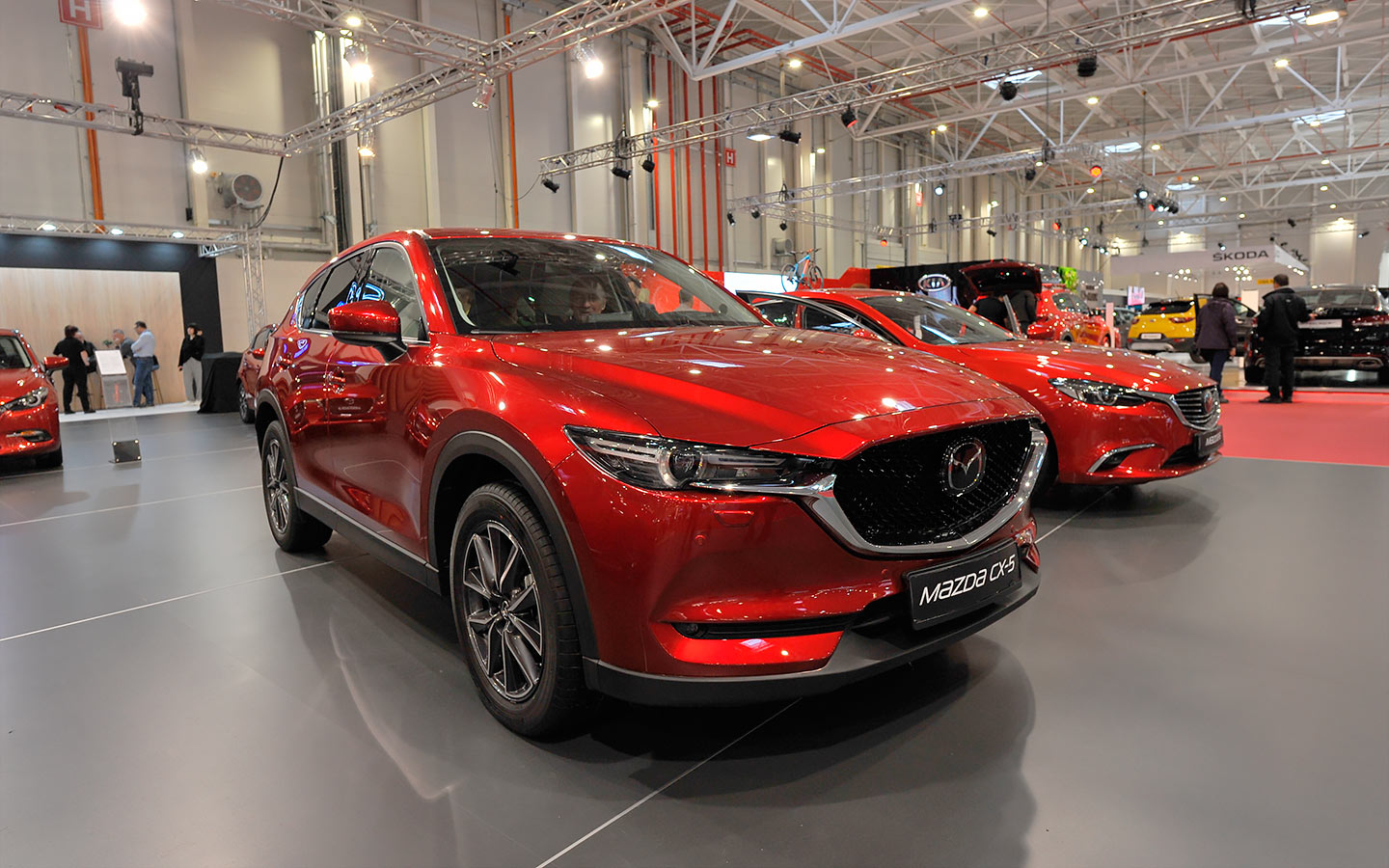
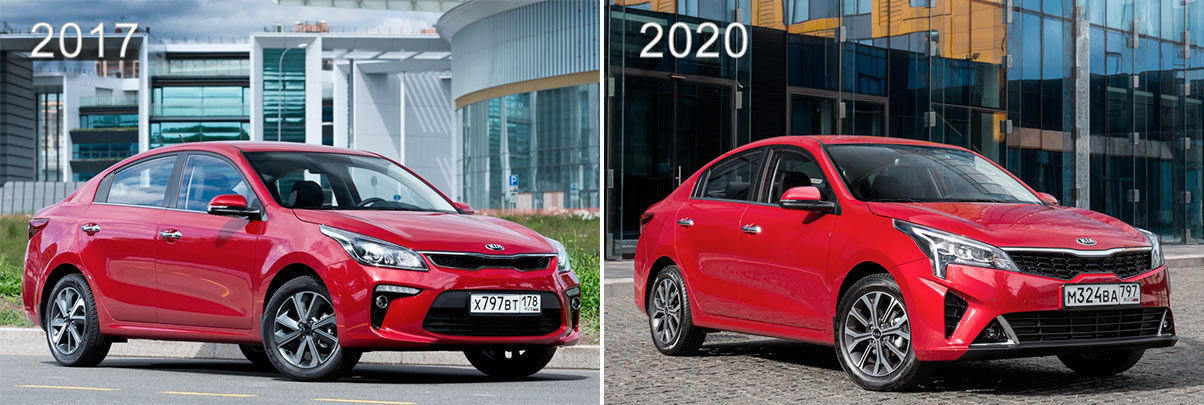
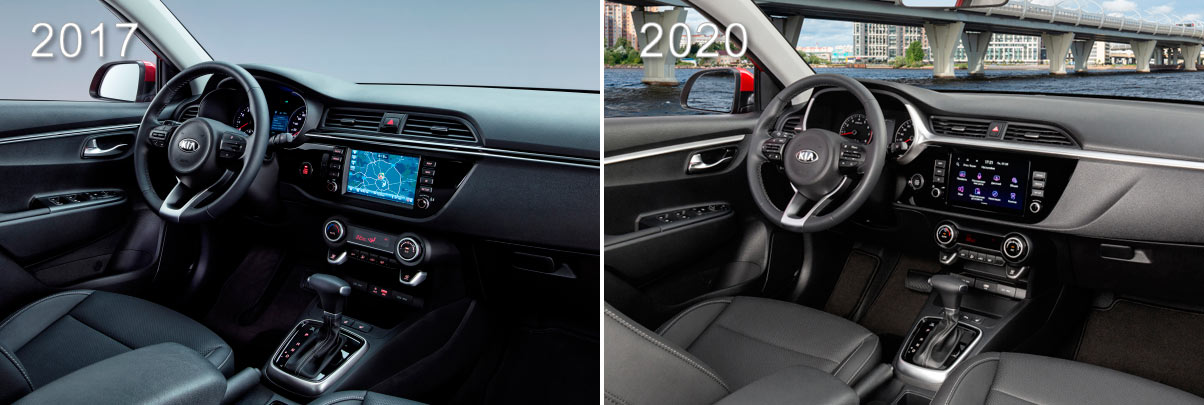
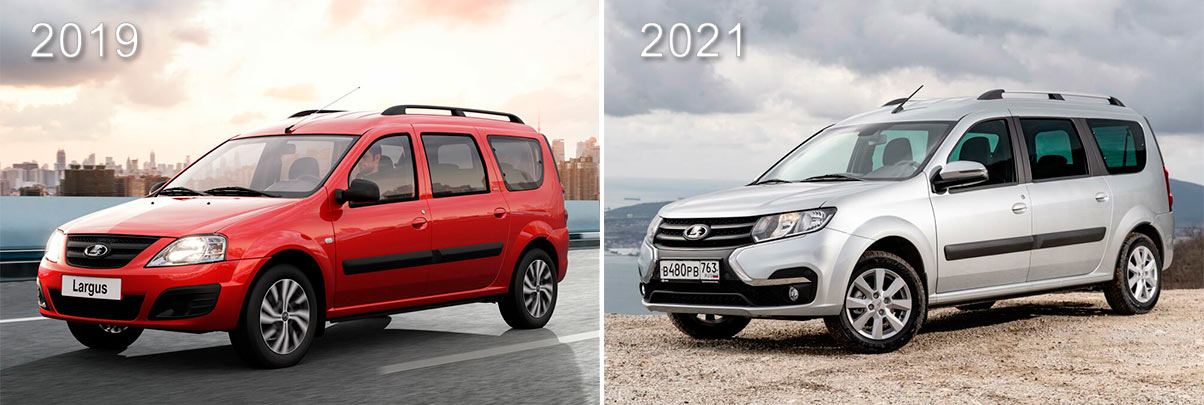
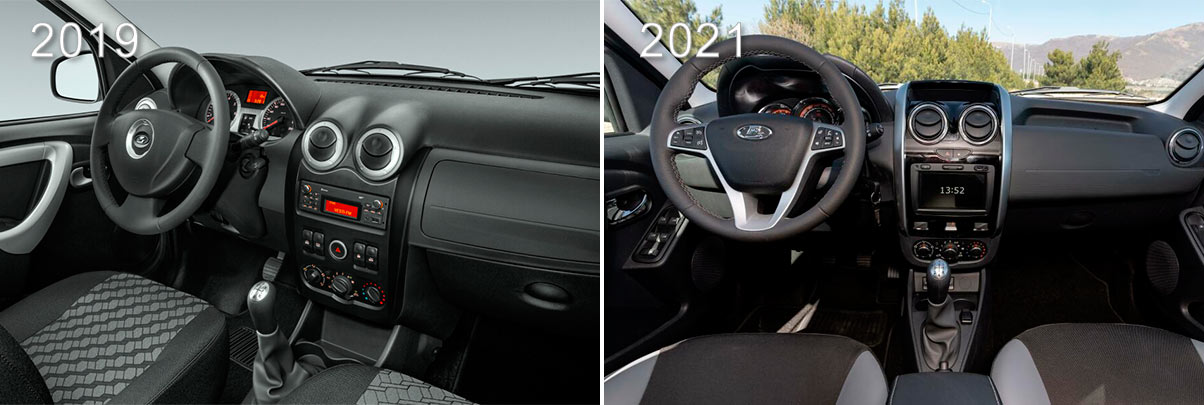
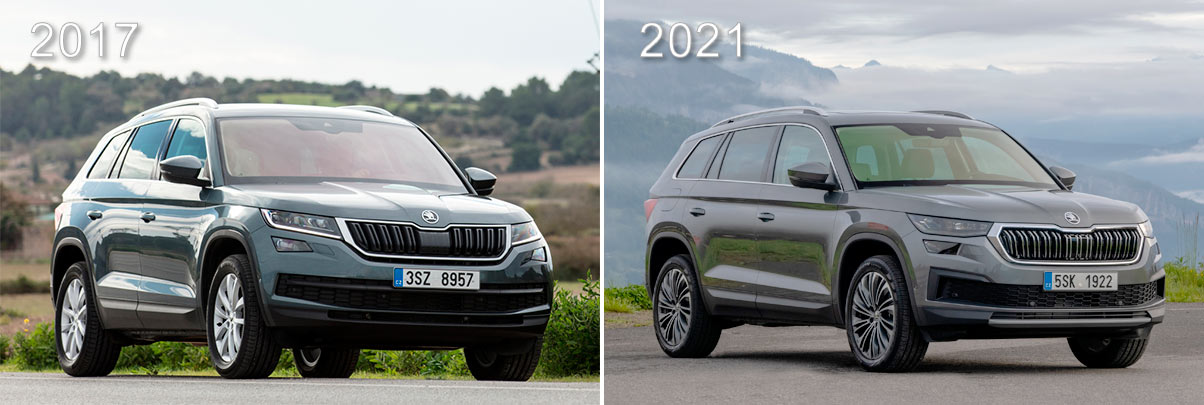


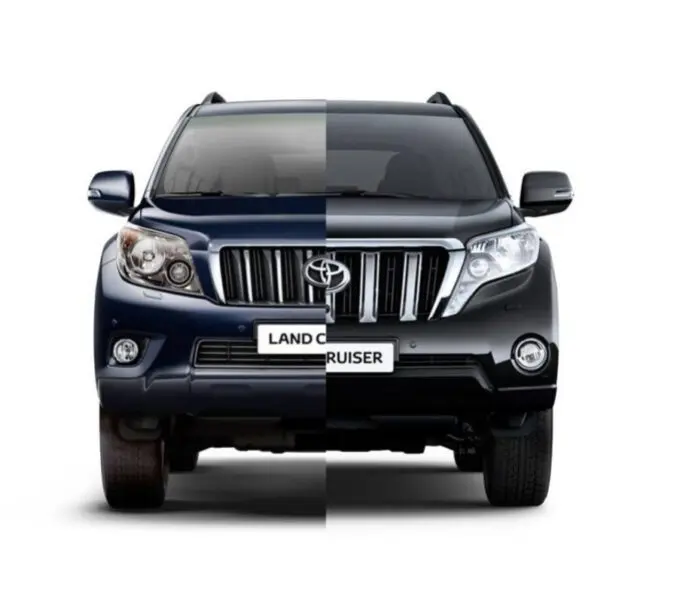
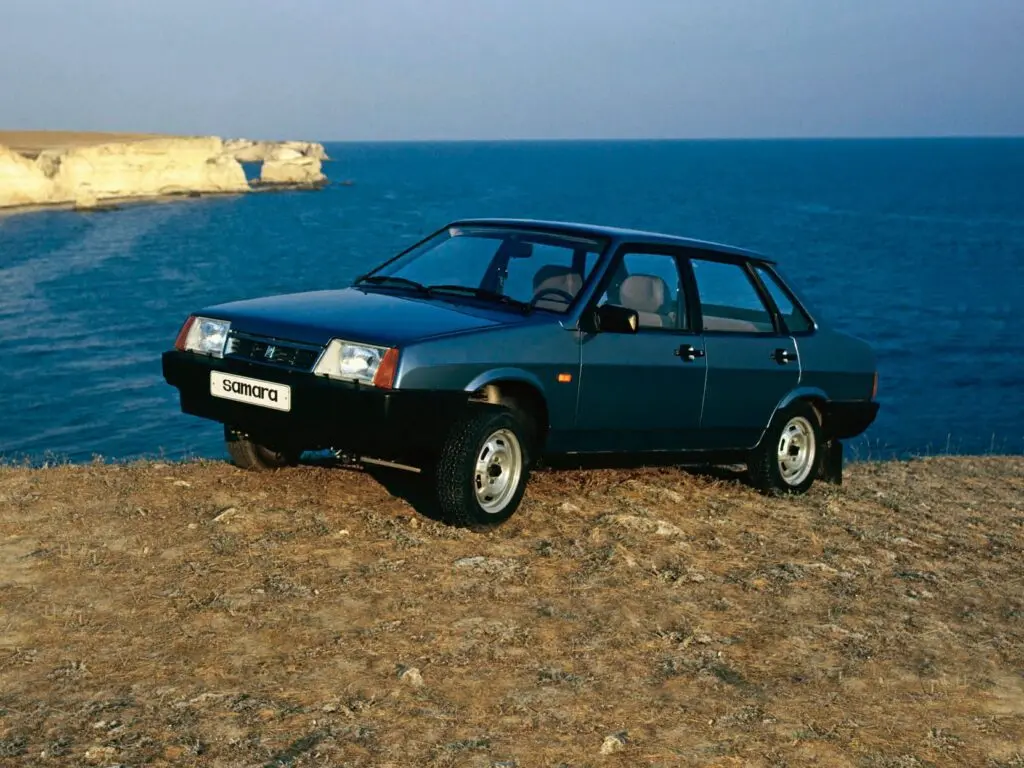
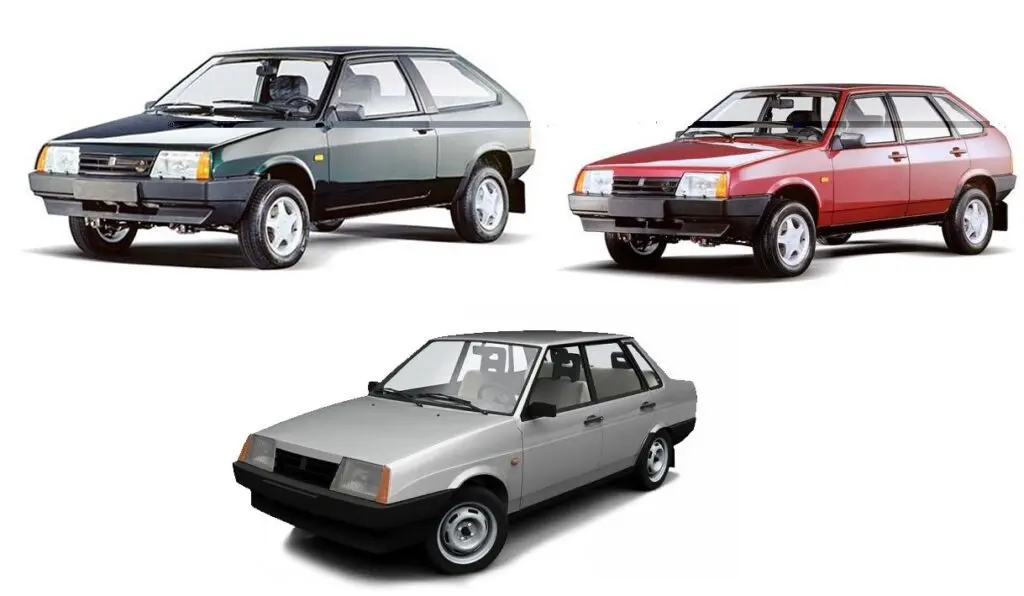
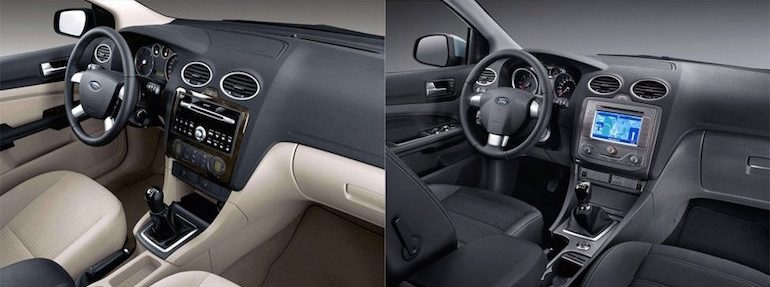
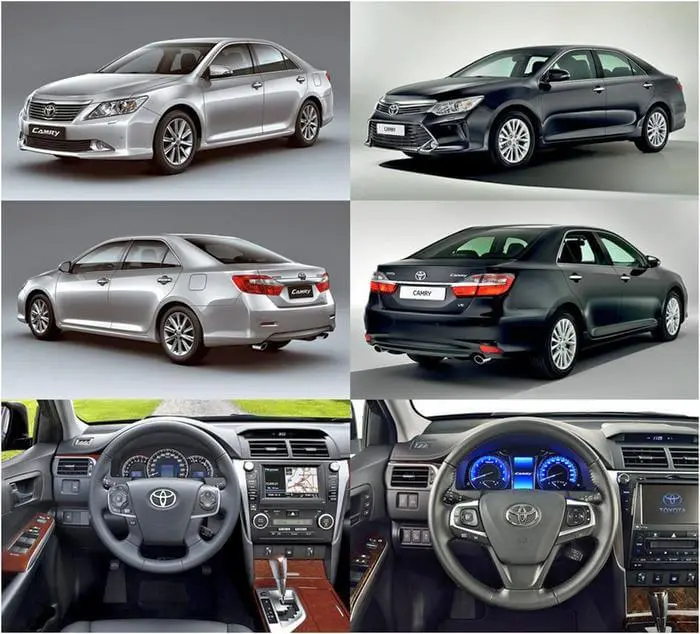
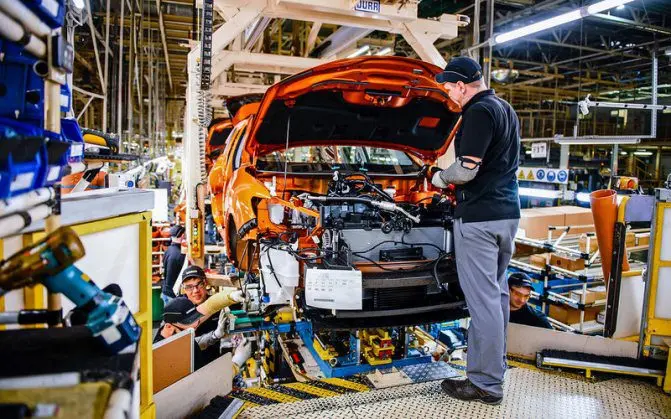
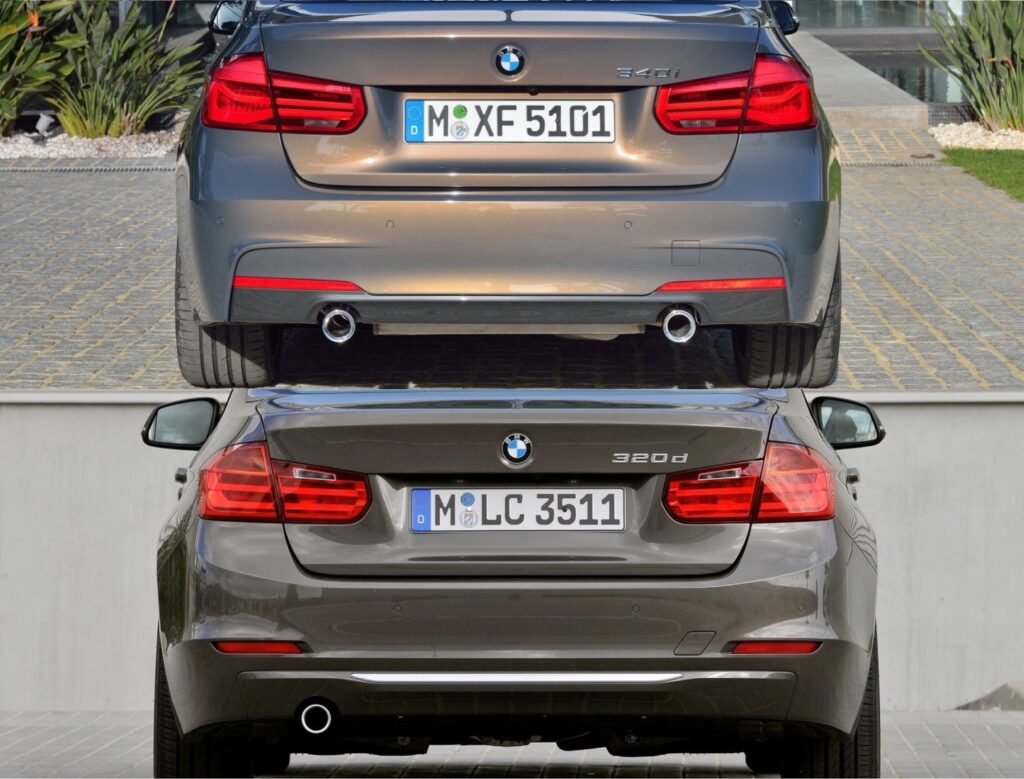
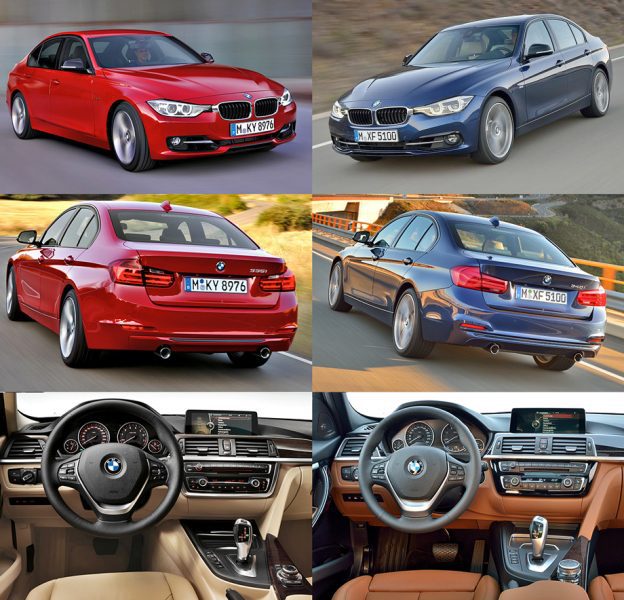
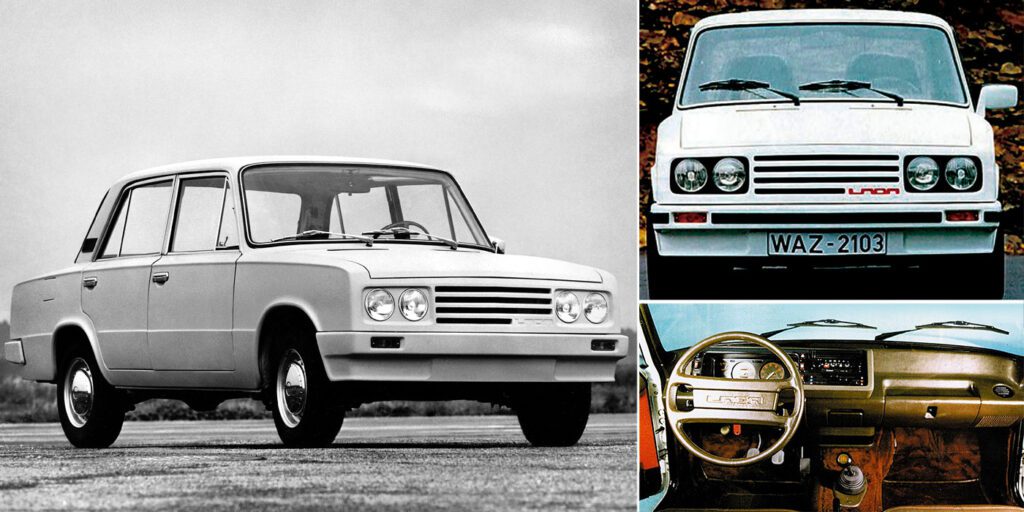
 As a result of the restyling carried out in 2012, the model acquired the outlines of the more popular Clio.
As a result of the restyling carried out in 2012, the model acquired the outlines of the more popular Clio. The ninth generation of the model, which appeared in 2013, was so unsuccessful that these cars not only sold poorly, but for one year the model was considered the worst in America. For this reason, the Japanese manufacturer was forced to resort to deep restyling. As a result, the front of the car, interior and ergonomics of the driver’s seat were seriously redrawn. After such updates, the car attracted more attention, which had a positive effect on sales.
The ninth generation of the model, which appeared in 2013, was so unsuccessful that these cars not only sold poorly, but for one year the model was considered the worst in America. For this reason, the Japanese manufacturer was forced to resort to deep restyling. As a result, the front of the car, interior and ergonomics of the driver’s seat were seriously redrawn. After such updates, the car attracted more attention, which had a positive effect on sales.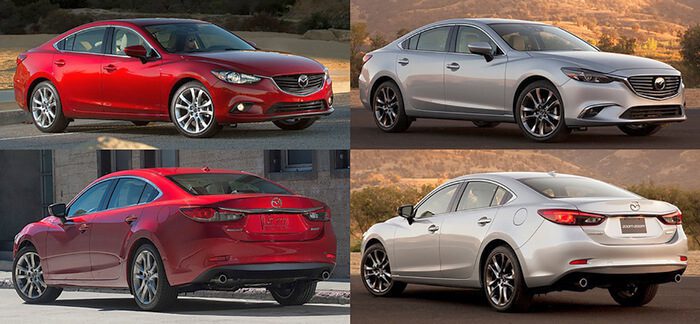 This model has been restyled twice. Moreover, it was not an easy facelift in the form of redrawing the geometry of the bumper or grille. The front optics have changed, a turbocharged 2.5-liter engine has been installed under the hood, the body has become much stiffer, and the chassis has changed its size.
This model has been restyled twice. Moreover, it was not an easy facelift in the form of redrawing the geometry of the bumper or grille. The front optics have changed, a turbocharged 2.5-liter engine has been installed under the hood, the body has become much stiffer, and the chassis has changed its size.

